3 Startup Communications Tips During COVID-19
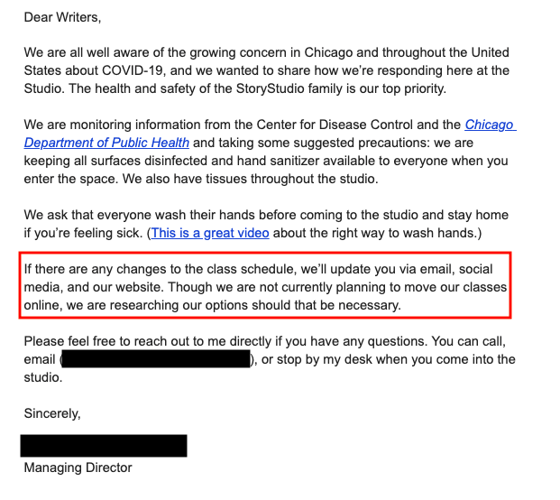
In recent weeks, we’ve focused on supporting clients and others in our network during the COVID-19 pandemic.
If you missed any of that, you can catch up here:
- Thoughts on whether or not to do PR during a crisis
- Ways you can help others, once you’re stabilized
- Signup form for a custom 30-day DIY PR plan
Today, we’ve got some tips for how to communicate right now.
Tip 1: Use Plain English
Nobody has the brain space right now to parse jargon or decode subtle hints. Aim to say what you’re saying in plain English.
Below is a great example of a plain-English COVID email from Chicago’s own Story Studio, sent on March 10.
What works here: even though not much had changed yet, they sent an email letting everyone know what was going on. Further, they laid out what to expect:
- If things change, they’ll let us know.
- Updates will come via social, email, and the website.
Plus a link to a hand-washing video. Always helpful.
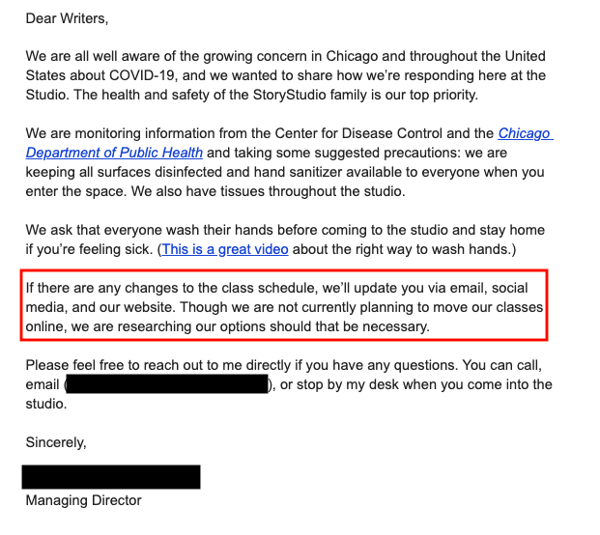
Tip 2: Be Honest About Your Situation
A lot of people – and startups – are struggling right now. Those that aren’t are eager to help however they can.
Whether you find yourself in the first camp or the second, be honest in your communications. You don’t necessarily have to blast an email to your entire list with your financial details, but know that it’s okay to show vulnerability.
The composting service I use did exactly that. After providing updates about how the pandemic was affecting service, the email concluded with this “What You Can Do” section.
What works here: The email calls out that they’ve lost revenue from commercial closures and includes three concrete requests: refer, e-gift, be kind. Very doable!
(And if you’re interested in a compost pickup service in the city of Chicago, I highly recommend WasteNot.)
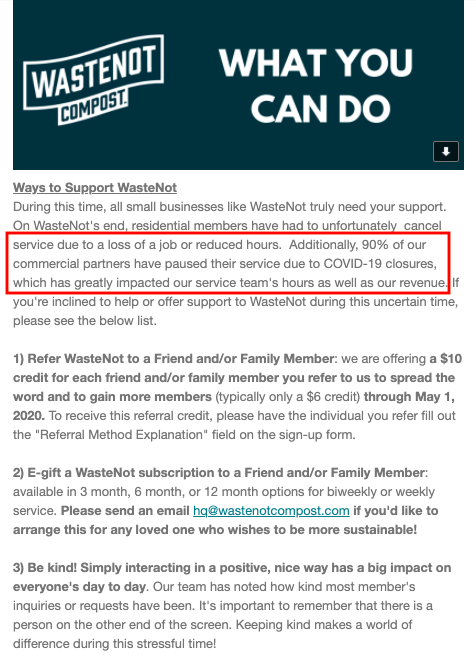
Tip 3: Be Concise
We’re all being bombarded by COVID communications right now, so make it easy for the reader to take in your message.
Specifically:
- Avoid text blocks.
- Use white space.
- Use lists.
- Visually highlight key information.
The Annoyance Theater did a masterful job of this in an email sent March 13 (below).
What works here: Two paragraphs! Masterful.
Also, I wasn’t scandalized that the theater didn’t mention its highest priority being the safety of its staff and performers – it’s implied in the actions it’s taking.
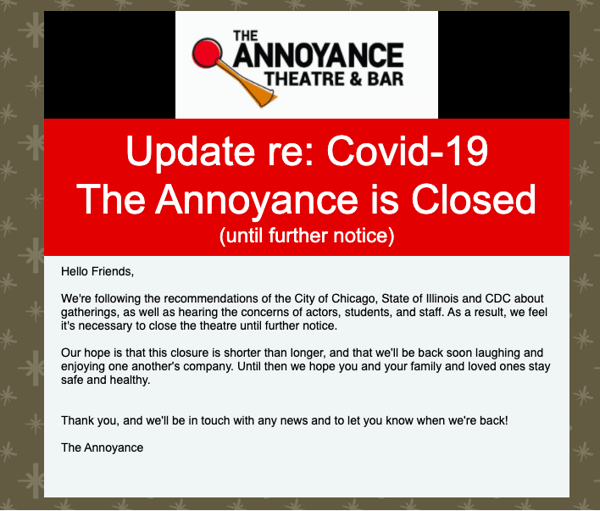
What Not to Do
This basically boils down to the opposite of the above:
- Don’t use needlessly complex language. Your readers’ brains are too tired to process it.
- Don’t send confusing messaging. It will only make matters worse.
- Don’t try to hide anything.
- Don’t ramble. Whitespace is your friend.
Here are some communications we’ve seen recently that we feel miss the mark for one of these reasons (so as not to embarrass anyone we removed some details).
- The Long, Text-Heavy Email
Honestly, I was too tired to read this one. There’s nothing in it to visually signal what’s important.
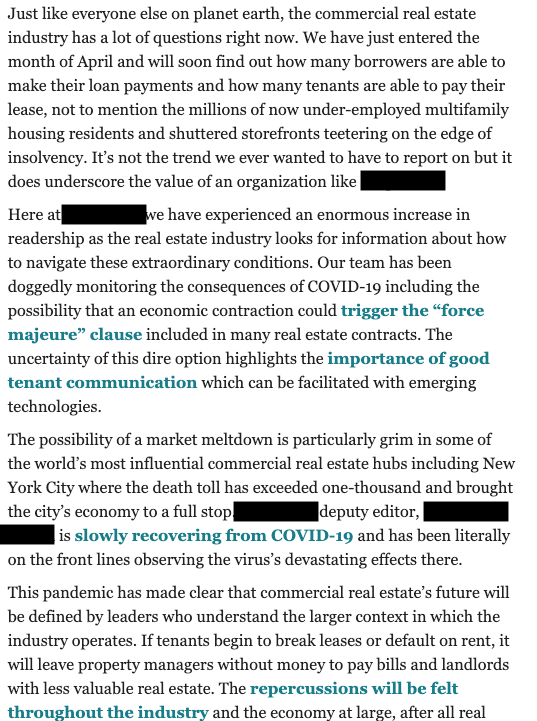
- The Confusing Messaging
This one, from a dental organization, was just plain confusing. The header says “To our members,” but the body addresses members, groups, brokers, and dentists. Send separate emails to separate audiences. Tell each only what they need to know.
And that second paragraph about working from home? First, it says “fully remote,” then “all of our employees who can” are working from home.
But… is that something dentists do?
Also, I don’t need to know about their business continuity plan.

- The Utter Lack of Relevant Information
This one is from my gym’s Twitter feed. I pulled this screenshot on April 2. Note that the pinned tweet is from October 23 and the most recent one is from February 12. Meanwhile, the gym has been closed for two weeks now – and I never received an email about it (my husband did, which is how I knew).
I love my gym, but this is pretty bad.

Show Empathy by Writing for Your Audience
One way to show that you understand your readers’ feelings is to adjust how you speak and write based on what you know about their state of mind.
Things are changing fast right now. Our communications should reflect that.
A message that might make sense today may feel gauche by next week. Something that feels too heavy right now may actually work in a few days.
Whatever you plan to send, start from a place of empathy. Remember that your readers are all people going through varying levels of difficulty.
If you’re not sure whether something hits the mark, get input from someone you trust.
And whatever else you do, stay safe out there. We’re rooting for you.







